Key takeaways:
- Audio-visual heritage captures emotional and cultural narratives, helping to connect generations and preserve family history.
- Documenting family stories fosters deeper connections and honors past generations, ensuring their legacies are shared with future descendants.
- Effective tools and methods for capturing and organizing audio-visual materials enhance the preservation of family memories and make them easily accessible.
- Sharing family history through storytelling sessions and social media strengthens familial bonds and creates a collective narrative that resonates across generations.
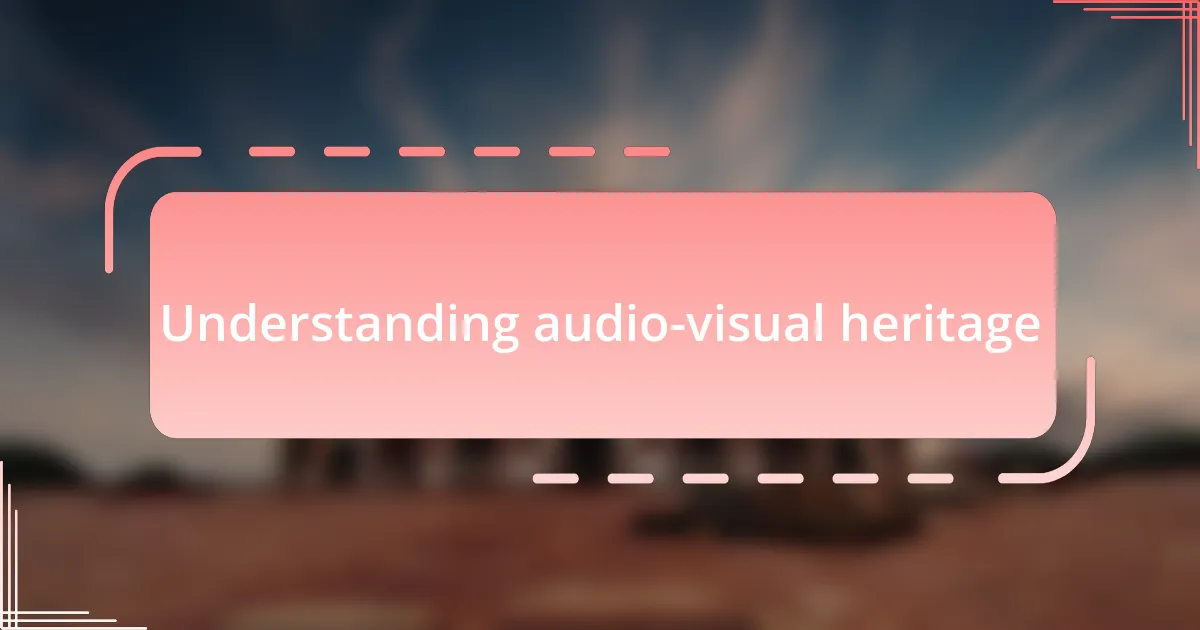
Understanding audio-visual heritage
Audio-visual heritage is more than just old films and recordings; it’s the emotional tapestry of our past, captured in moving images and sounds. I remember the first time I watched home movies from my childhood. The laughter, the familiar voices, and the memories tied to those visuals created a rush of nostalgia that brought my family history to life in a way that mere photographs never could. How incredible is it that audio and video can evoke feelings and stories we didn’t even realize were buried in our minds?
When I think about audio-visual heritage, it strikes me how it serves as a bridge connecting generations. For example, I recently shared a video with my children of their grandparents dancing at a wedding decades ago. Their eyes lit up, filled with joy and a sense of wonder as they connected with family members they never met. Isn’t it powerful how a simple recording can help forge bonds and enrich our understanding of who we are as a family?
Moreover, preserving audio-visual heritage is crucial for maintaining the nuances of culture. With each film and audio recording, we store not just events, but also the emotions, attitudes, and everyday life of a particular time. I ponder, without these recordings, how much of our individual and collective experiences risk being lost to the sands of time? This thought, both daunting and motivating, is what drives my passion for documenting and preserving my family’s unique history.
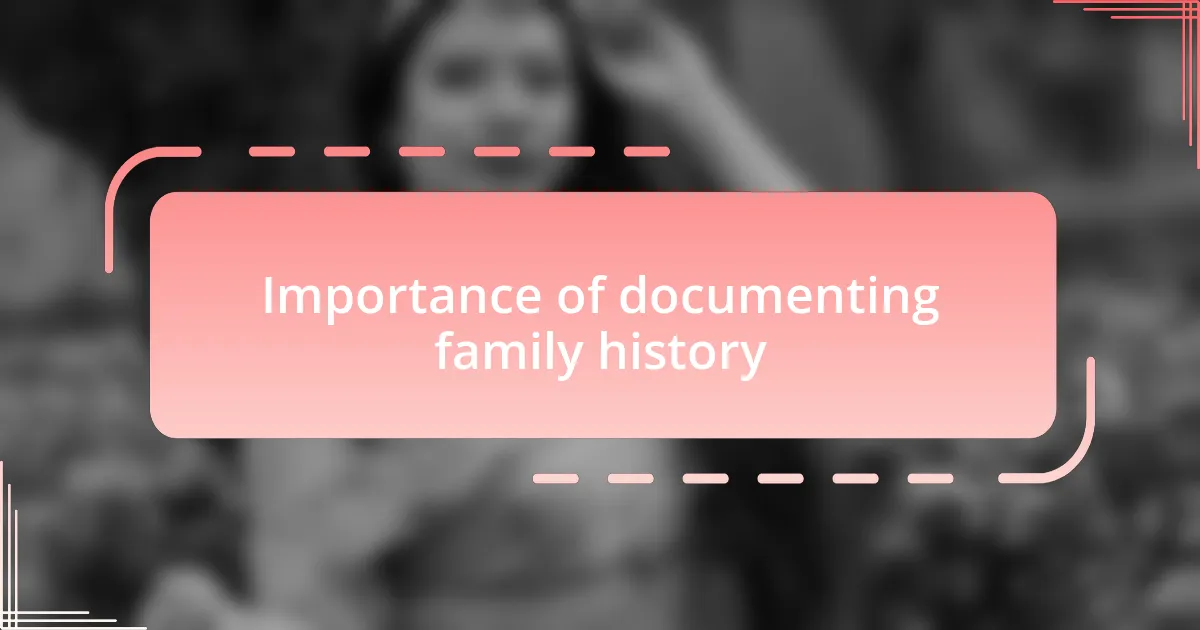
Importance of documenting family history
Capturing family history holds immense significance for individuals and communities alike. When I sat down with my parents to record their stories, I realized how much knowledge and wisdom they were willing to share – stories that hadn’t been told in years. Each tale not only reaffirmed our family’s identity but also sparked a deeper appreciation for the resilience and struggles they faced. Isn’t it interesting how these narratives form the backbone of who we are today?
The act of documenting family history can also strengthen bonds within families. I recall a heartfelt moment when I played an audio recording of my grandmother recounting her childhood to my siblings. We were all captivated, realizing that understanding our past could enhance our connection. How often do we miss the chance to learn from those who walked before us? A simple conversation can unveil layers of richness in our relationships that we never knew existed.
Moreover, preserving family history is a way to honor those who have come before us. When I created a scrapbook filled with both photos and written accounts of my ancestors, it felt like giving them the space to continue living on in our hearts. I often ask myself, what better tribute can we offer to our loved ones than ensuring their experiences and legacies are shared and remembered? Documenting family history is ultimately an act of love, a gift to future generations that transcends time.
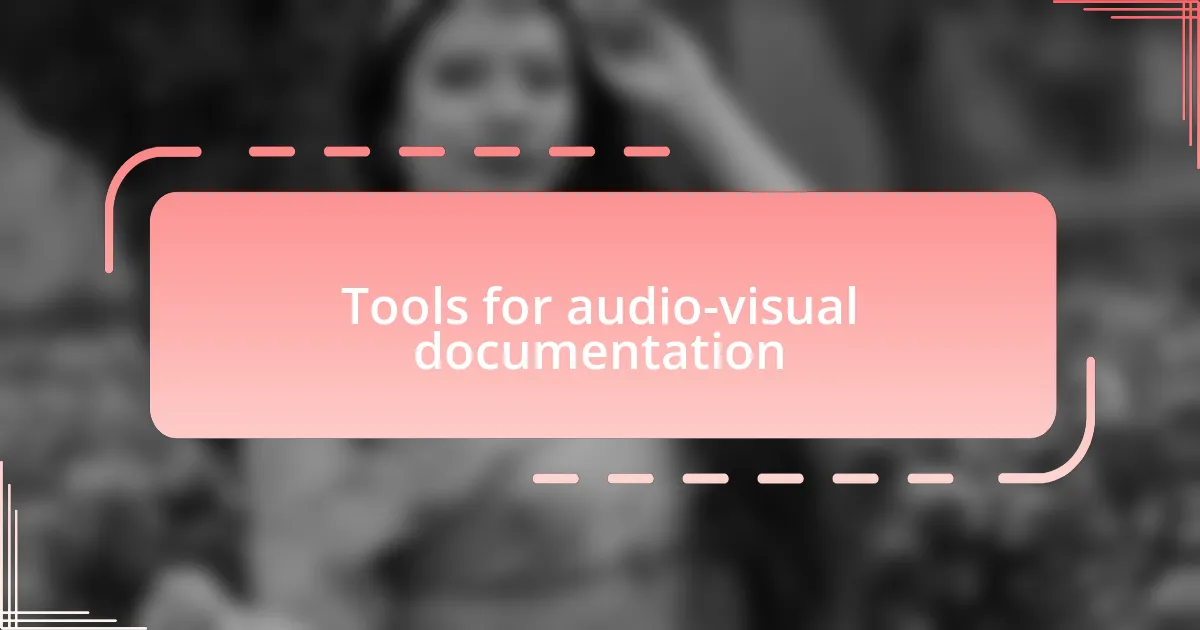
Tools for audio-visual documentation
When it comes to audio-visual documentation, the right tools can make all the difference. I found a simple yet powerful digital voice recorder to be invaluable during my recordings. It allowed my parents to express their stories with clarity, capturing not just their words but the emotions that accompanied them. Have you ever felt the weight of someone’s voice crack with nostalgia? It really brings their experience to life.
In addition to voice recorders, video cameras can enhance your documentation efforts significantly. I remember using a handheld camera to film family gatherings; these moments became treasure troves of visual memories. Watching my children play with their grandparents on screen is a poignant reminder of the connections we foster. It makes me wonder, how many stories can be found in the laughter and joy shared during those simple moments?
Lastly, organizing the audio and video content is crucial. I invested in software that helps categorize and edit recordings, turning raw footage into polished keepsakes. I often think about the frailty of memory and how easily our stories can fade over time. Isn’t it comforting to know that with the right tools, the legacies of our loved ones can be preserved for generations to come?
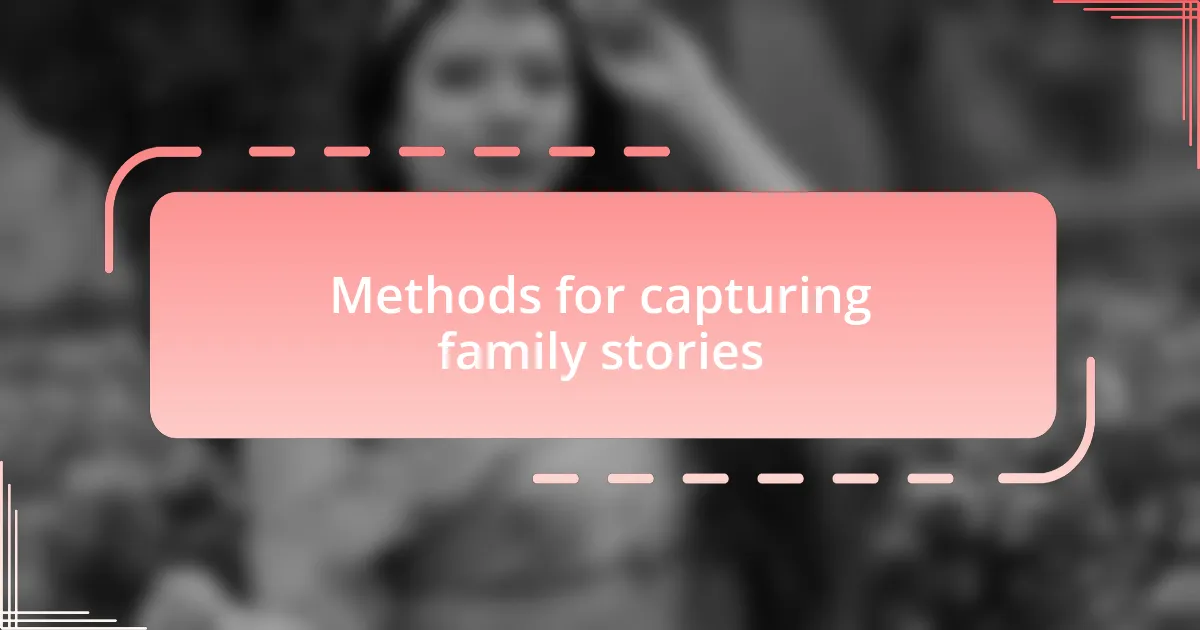
Methods for capturing family stories
Capturing family stories goes beyond just recording; it’s about creating an environment where people feel safe to share. I set up informal interviews with my grandparents, turning their living room into a storytelling corner filled with old photos and familiar scents. It’s amazing how a simple cup of tea can ease nerves and unleash a torrent of memories. Have you ever noticed how the mood can shift when reminiscing about happy times?
I’ve also experimented with storytelling through journaling. I often jot down snippets of conversations or funny anecdotes I overhear during family gatherings. One time, I scribbled down my uncle’s hilarious account of his first car, complete with his dramatic flair. Revisiting that entry still makes me chuckle! These written snapshots capture not only the essence of their words but also the unique tone and humor of each person.
Moreover, utilizing social media platforms helps in gathering and sharing family stories. I created a private family group where everyone can upload pictures and share their memories. Watching the stories unfold in real time reminds me of the power of connection. Doesn’t it feel wonderful to see family history sprout through collective contributions? This method fosters shared storytelling, enhancing the richness of our family narrative.
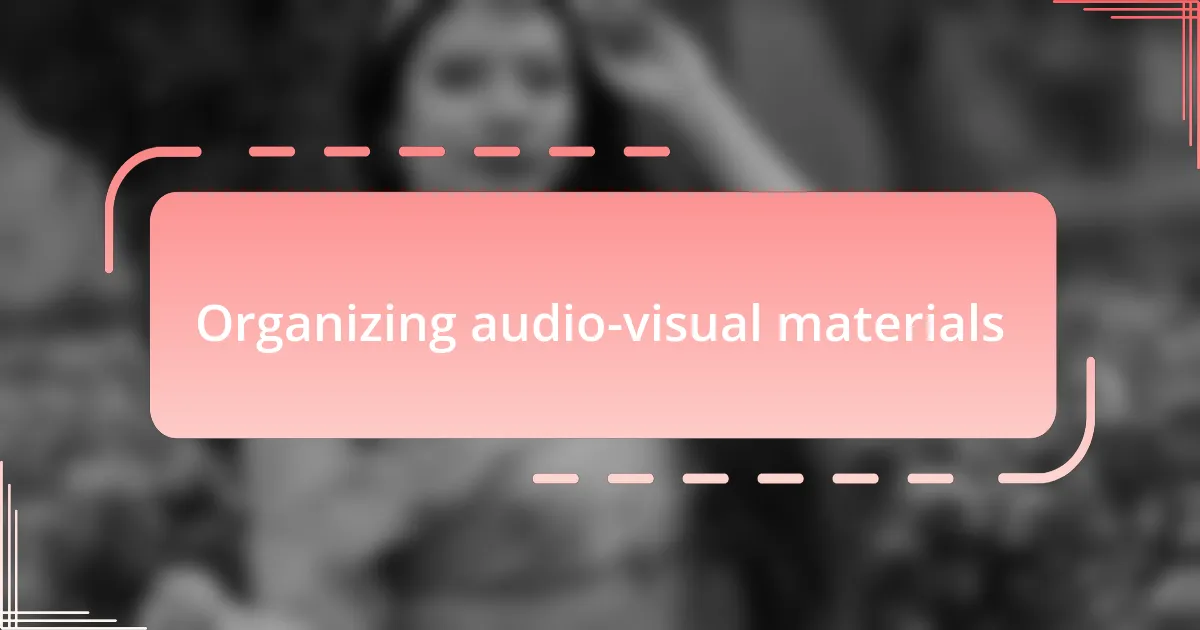
Organizing audio-visual materials
When it comes to organizing audio-visual materials, I find that creating a systematic approach makes all the difference. I start by categorizing recordings based on themes—like holidays, weddings, or just everyday moments. For instance, I once found a treasure trove of VHS tapes from family vacations. It was so fulfilling to label them with dates and events, turning that chaotic pile into a coherent narrative of our family adventures.
I also learned the value of digital organization. Scanning old photographs and digitizing cassette recordings allows me to store everything in one accessible location. I invested time in creating folders on my computer and using consistent naming conventions, which simplifies retrieval later. Honestly, there’s something incredibly satisfying about knowing that I can pull up a cherished memory within seconds. Have you ever tried finding a specific video only to realize it’s buried among countless files?
Lastly, I regularly back up my organized materials on an external hard drive and cloud storage. This way, I ensure that our family history is safe from unexpected mishaps. I remember feeling a wave of relief when I realized that all those precious moments were secure and easily shareable with family members. It’s like building an archive of love, ready to bring smiles to faces in future gatherings. What’s your strategy for keeping those memories accessible?
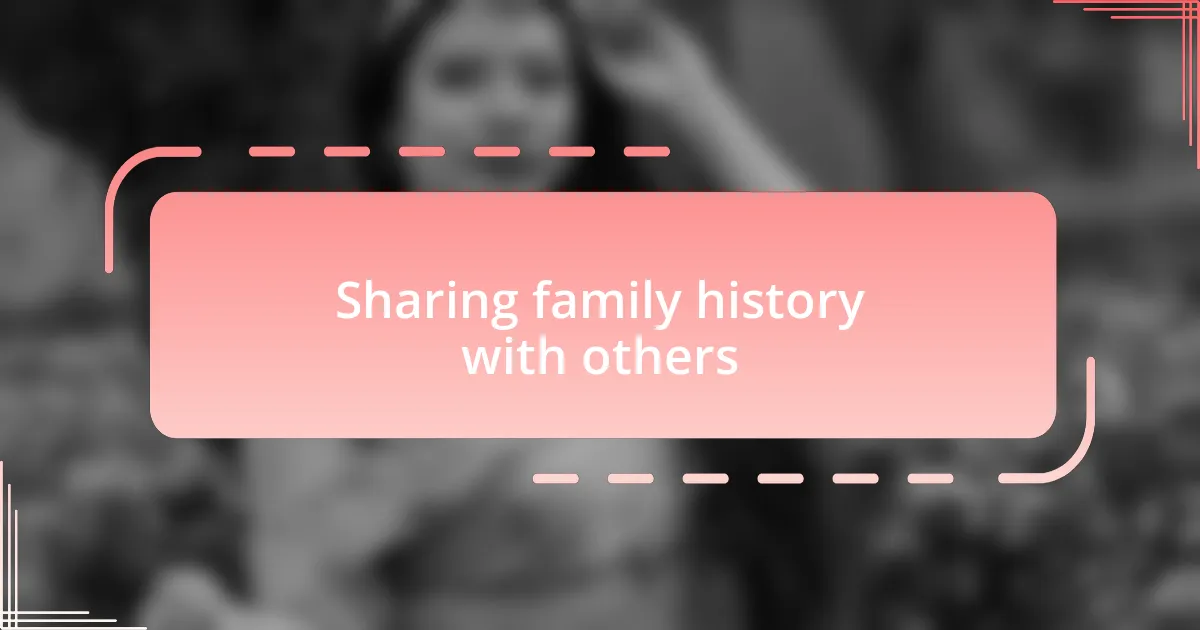
Sharing family history with others
Sharing family history is one of the most rewarding aspects of preserving our past. I often gather the whole family around for a storytelling session where we reminisce about old photos or recordings. I remember one evening, my grandmother shared stories about her childhood as we flipped through a digital album I had created. Watching the joy on her face as she relived those moments reminded me of how crucial it is to keep our family narratives alive.
I also make it a point to share our family’s audio-visual heritage through social media. One time, I posted a video montage of our last family reunion, complete with loving messages from relatives who couldn’t attend. The responses were heartwarming. I saw family members comment, share their own memories from that day, and reconnect with one another. It struck me how these modern platforms can bridge distances and strengthen familial bonds, creating a collective history that everyone can contribute to.
Sometimes, I even organize family meet-ups specifically to share stories and showcase our archived materials. It was during one of these gatherings that a cousin discovered some old audio recordings of our parents’ voices. Hearing their laughter brought tears to our eyes, and we realized that sharing these moments not only preserves our history but also deepens our emotional connections. How do you think sharing these stories impacts your family dynamics?